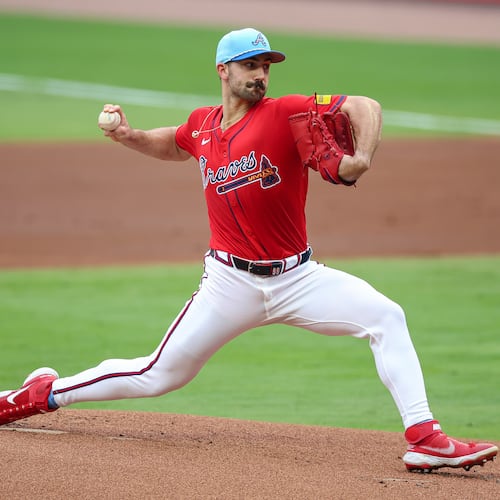Fine by the Braves. Mystery was part of the plan.
Clark, who left the Braves last fall to become an assistant general manager for the Nationals, still grins and smiles.
“One day in the next 10, 15 years, I will talk about it,” said Clark, who denies any cahoots with the coach. “You hear the rumors about we did this and we did that. No we didn’t. We had a good plan. Jason wanted to be a Brave. We wanted him to be a Brave. The only thing that we did was we tried not to tip our hand.”
“I probably saw him 75-80 [at-bats] with the wood [bat],” Clark said. “Never saw him get intentionally walked once.”
“I never saw him swing the bat until the third or fourth game I went to,” Clark said of Heyward’s senior season. “They just didn’t pitch to him. Even though area scouts might like him a lot, the cross checkers and the scouting directors come in and they would get frustrated.”
So why didn’t others scout him more thoroughly in summer ball? Clark said in late June and July, a lot of teams send amateur scouts to cover pro games for the July 31 trading deadline. Or they used to, anyway.
“Our motto was we’re going to start getting ready for next year’s draft the day after this year’s,” Clark said.
“Guys would ask me and I’d say ‘Hey, he’s 6-foot-4,’” Eugene said. “I think a lot of it is due diligence. People didn’t show up and look.”
He wasn’t threatened by the Braves because they picked later. And he felt especially good after another Marlins scout, David Post, came to a playoff game.
“David Post looks at me and goes, ‘Are you kidding me?’” Bridges said. “He goes, ‘I’m good, man. Let’s go eat.’”
“We took who we thought was the best player at the time, and that’s what you do in the business,” said Jim Fleming, Marlins assistant GM and vice president of player development and scouting. “We evaluated Matt Dominguez as the guy we wanted. Still do. We’re very pleased with him. We’ll go forward. Looking back is not something we do a whole lot.”
Bridges thinks the Marlins put a higher premium on third base, a position typically harder to find that corner outfielders.
“It was the sickest I’ve ever been as a scout,” he said.
“He’s already on the [Nationals'] radar,” Clark said. “I can promise you that.”
About the Author
Keep Reading
The Latest
Featured

